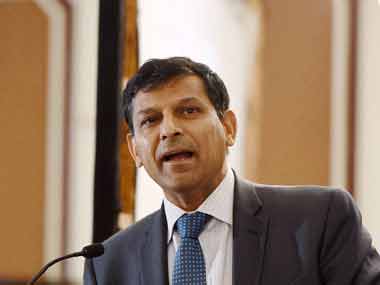The Reserve Bank of India (RBI) may have acted in a hurry to cut its key rates well before inflation came under complete control as a likely increase in government spending to revive growth and a spike in food inflation can reverse the declining trend in prices any time. This is the inference one can draw from a recent IMF paper on Indian economy. If indeed this happens, that would give room for criticism against governor Raghuram Rajan, for lowering his guard against inflation a bit too early with two surprise rate cuts this year. This came despite concerns among economists that the apex bank could have waited some more to see clear, convincing signs of inflation cooling. [caption id=“attachment_2155835” align=“alignleft” width=“380”]
 PTI[/caption] To be sure, the 50 basis points (bps) cut hasn’t yet been transmitted to bank lending rates yet, but this would happen beginning next month purely since there is too much pressure on banks to cut loan rates, even though many of them may not be willing to in order to protect their margins. When this happens, this is surely poised to impact the consumer behaviour and demand pressures can pick up thus, economists warn. The trend of retail inflation in the recent months does not exactly oblige to the path the policy-makers expected it to follow. Since November, consumer inflation has risen from 3.27 percent to 5.4 percent. Even after factoring in the seasonal fluctuations, the future path of inflation is filled with more risk factors than favourable ones. These risk factors include the impact on crops due to untimely rains across the country, the possibility of a spike in international crude prices and impact of higher government spending on demand-side pressures, if it happens. As the IMF paper highlights, there is a clear possibility of resurgence of food inflation when economy picks up, which can impact the overall inflation. IMF projects the average food inflation to be 6.25 percent in 2015-16, above the central bank’s target of 6 percent by January. If indeed inflation rises from its grave, Rajan may have to explain his rate easing policy stance, before he embarks on another round of battle to exorcise the price worries from the economy.
PTI[/caption] To be sure, the 50 basis points (bps) cut hasn’t yet been transmitted to bank lending rates yet, but this would happen beginning next month purely since there is too much pressure on banks to cut loan rates, even though many of them may not be willing to in order to protect their margins. When this happens, this is surely poised to impact the consumer behaviour and demand pressures can pick up thus, economists warn. The trend of retail inflation in the recent months does not exactly oblige to the path the policy-makers expected it to follow. Since November, consumer inflation has risen from 3.27 percent to 5.4 percent. Even after factoring in the seasonal fluctuations, the future path of inflation is filled with more risk factors than favourable ones. These risk factors include the impact on crops due to untimely rains across the country, the possibility of a spike in international crude prices and impact of higher government spending on demand-side pressures, if it happens. As the IMF paper highlights, there is a clear possibility of resurgence of food inflation when economy picks up, which can impact the overall inflation. IMF projects the average food inflation to be 6.25 percent in 2015-16, above the central bank’s target of 6 percent by January. If indeed inflation rises from its grave, Rajan may have to explain his rate easing policy stance, before he embarks on another round of battle to exorcise the price worries from the economy.
Did Raghuram Rajan jump the gun? IMF's warning on inflation seems to say so
Dinesh Unnikrishnan
• March 16, 2015, 13:25:41 IST
If indeed inflation rises from its grave, Rajan may have to explain his rate easing policy stance
Advertisement
)
End of Article